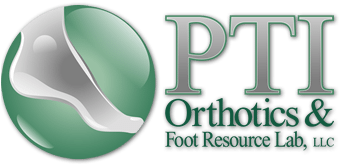Pronation – Pes Planus Condition
 Normal feet pronate with weightbearing. Pronation is good for you since it helps absorb the impact of ground contact and compensate for uneven walking surfaces. If you did not pronate at all you would have a ” Frankenstein” type gait. It is excessive pronation that is damaging. Pronation can take place at different phases of the gait cycle causing different problems.
Normal feet pronate with weightbearing. Pronation is good for you since it helps absorb the impact of ground contact and compensate for uneven walking surfaces. If you did not pronate at all you would have a ” Frankenstein” type gait. It is excessive pronation that is damaging. Pronation can take place at different phases of the gait cycle causing different problems.
Excessive or hyperpronation can be hereditary, congenital or caused by leg-length discrepancies, muscle imbalances, joint laxities, and excessively tight muscle groups, torsional problems of the limb or other reasons not listed here. Excessive pronation causes excessive stress on the subtalar joint which may cause excessive stress on the medial longitudinal arch, the plantar fascia and certain tendons. Here are some common conditions that can arise from excessive pronation. Achilles Tendonitis, Heel Pain, Plantar Fasciitis, Heel Spurs, Post. Tib. Tendonitis, Shin Splints, Metatarsalgia, Bunions, Interdigital Neuroma, Fixed Flexion Deformities, Knee Pain, Hip Strain, Lower Back Pain and others not listed here. Over the counter arch supports may offer temporary relief. Excessive Pronation is best treated with a custom orthotic to control excessive joint motion. Specific stretching exercises must also be done at the same time because certain muscle groups can work against the subtalar joint and the medial longitudinal arch. Ask your health care professional which will work best for you.
